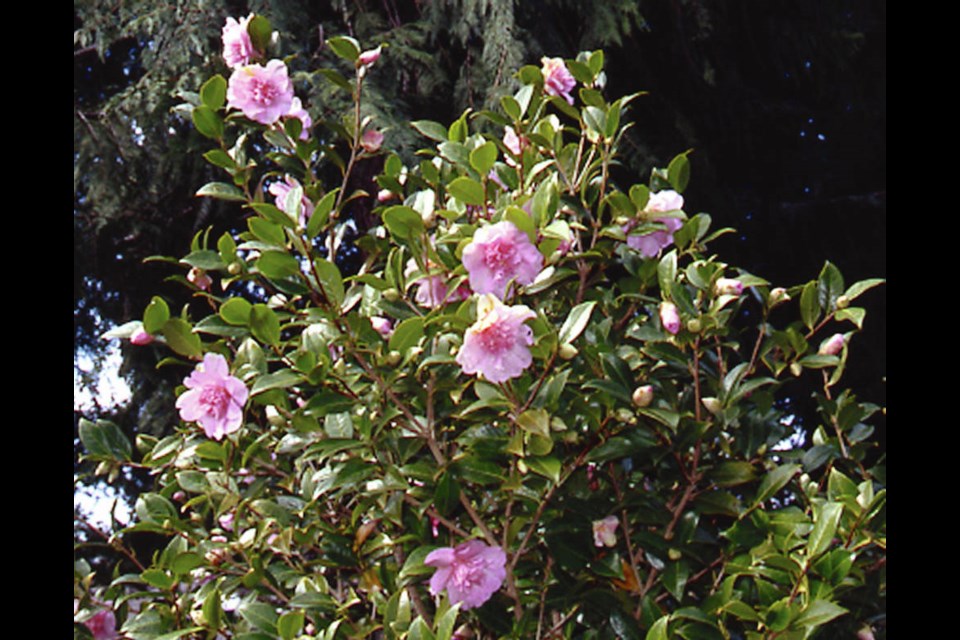Dear Helen: I am confused by the concept of mulching. When should I apply it? How much? What types are best? How are ground covers mulched? Will a mulch smother them if applied on top?
T.D.
For most plants, late spring or early summer is ideal for mulching. During this time, as air and soil temperatures are warming and rainfall usually becomes sparse, mulches help to retain moisture in the soil. It’s important to water slowly and deeply before mulching.
My preference in mulches is a good quality compost. The source of that compost will depend on what is available near you. Always ask around among gardening friends and neighbours about the best product they have found. If possible, check it out in person before acquiring any. Local garden centre personnel can be another source of useful advice.
How much to use depends on the plants being mulched. Small perennials will need only a light soil covering while large shrubs can be given a layer up to five cm deep. Never pile a mulching material up against a tree or shrub trunk.
Ground covers vary in their habits. I look for slight gaps in the covers to sneak in a little of the mulch, using a small scoop. The individual tufts of growth in soft-textured covers like hardy, carpeting geraniums are easily held apart for the insertion of a little mulching material. More can be applied around the edges of the planting.
Over tight-knit covers like low, spreading heathers, a fine-textured compost sprinkled over top will work its way down to soil level as the planting is watered.
Dear Helen: I can’t find your recipe for a rhubarb tart with a shortbread crust and meringue topping. Could you send it to me and perhaps place it in a column for others to enjoy?
E.D.
This is my favourite rhubarb recipe, adapted from one I came across years ago. I usually make the crust the day before and store it (unbaked) in the fridge.
Rhubarb meringue pie
Shortbread crust
1/2 cup butter, softened
1 Tbsp icing sugar
1 cup flour
Combine and press into a nine-inch pie plate. Bake at 350 F for 12 minutes
Filling
3 egg yolks
3/4 cup sugar
2 Tbsp flour
1/2 cup whipping cream
1 tsp vanilla
4 cups chopped rhubarb
Beat everything except rhubarb together. Stir in rhubarb. Pour into crust. Bake 40 minutes or until custard is set, at the same temperature.
Meringue
3 egg whites
1/4 cup sugar
Beat egg whites and sugar together until the blend forms soft peaks. Spread over pie. Continue baking until the meringue is lightly browned
Dear Helen: Two beautiful, healthy looking camellia bushes in our garden have never bloomed in the 12 years since we bought our home. Can you think of anything we can do to nudge them into flowering?
M.M.
There are several possible causes for a lack of bloom on camellias. The plants will not bloom in deep, gloomy shade. Ideal is light or dappled shade.
Another common issue is soil allowed to dry in the summer, when flower buds should be forming. You describe the plants as being in very good condition. That would indicate a good soil quality and adequate, evenly maintained moisture levels.
Plants with an abundance of lush green growth and little or no bloom can indicate an over-balance of nitrogen in the soil. This can result from fertilizing with a product that is mainly nitrogen rather than one designed for use on acid-loving flowering plants like rhododendrons and camellias.
One or two waterings with Alaska MorBloom now and perhaps again in early summer would also be helpful. It has no nitrogen, just phosphorus and potassium — nutrients that help to promote flowering.
Though you have not mentioned any bud formation on your shrubs, I should add that a very common cause of failure to bloom properly is exposure to morning sun, which can scorch frosted or dew-laden buds or opening blooms.
VHS meeting. The Victoria Horticultural Society is hosting a Zoom meeting on Tuesday, June 1, at 7 p.m. Carla Gibson, executive director of Swan Lake Christmas Hill Nature Sanctuary, will introduce herself to the community, review programs at the centre and speak about their role in educating people on the use of native plants. For more information on the sanctuary visit swanlake.bc.ca. Non-members can register for $5.00. To register visit vichortsociety.org.



